Choosing the Better Battery: Lithium Titanate (LTO) or LiFePO4
Before comparing LiFePO4 and LTO, it's important to understand their core chemistry and structure.
What is LiFePO4?
LiFePO4, or lithium iron phosphate, is a type of lithium-ion battery known for its safety, long cycle life, and stability. It is commonly used in energy storage systems, electric vehicles, and backup power supplies.
What is Lithium Titanate (LTO)?
LTO is another form of lithium-ion battery that replaces the graphite anode with lithium titanate, resulting in a significantly faster charge rate and improved cycle life. LTO batteries are often found in high-performance applications requiring rapid charging and discharging cycles.
- Advantages and Disadvantages of LiFePO4 Batteries
- Advantages and Disadvantages of Lithium Titanate (LTO) Batteries
- Performance Comparison: LiFePO4 vs. LTO
- Best Use Cases for LiFePO4 and LTO Batteries
Advantages and Disadvantages of LiFePO4 Batteries
Advantages of LiFePO4
- Long Cycle Life – LiFePO4 batteries can last over 2,000 to 5,000 cycles, making them highly durable.
- High Safety – These batteries are more stable and less prone to thermal runaway or combustion.
- Environmentally Friendly – They contain no heavy metals, making them more eco-friendly than other lithium-ion batteries.
- Good Energy Density – They provide a good balance between weight and capacity.
Disadvantages of LiFePO4
- Lower Charge Rate Compared to LTO – LiFePO4 takes longer to charge than LTO batteries.
- Heavier and Bulkier – Compared to other lithium-ion chemistries, they are slightly heavier.
- Higher Initial Cost – While cost-effective over the long term, the initial investment can be high.
>>See also How To Select The Best Breaker For A 4500 Watt Hot Water Heater
Advantages and Disadvantages of Lithium Titanate (LTO) Batteries
Advantages of LTO
- Ultra-Fast Charging – LTO batteries can charge in as little as 10 to 15 minutes.
- Extremely Long Cycle Life – LTO batteries can last over 10,000 cycles, significantly outlasting other lithium-ion chemistries.
- Superior Low-Temperature Performance – They perform well in cold environments where other lithium batteries struggle.
- High Safety Level – Like LiFePO4, LTO is very stable and resistant to thermal runaway.
Disadvantages of LTO
- Lower Energy Density – LTO batteries store less energy per unit of weight compared to LiFePO4.
- Higher Cost – LTO technology is significantly more expensive, making it less practical for cost-sensitive applications.
- Lower Voltage Output – This can affect compatibility with existing power systems.
Performance Comparison: LiFePO4 vs. LTO
1. Cycle Life
|
Battery Type |
Cycle Life Range |
|
LiFePO4 |
2,000 - 5,000 cycles |
|
LTO |
10,000+ cycles |
LTO clearly has a superior lifespan, making it ideal for applications that require frequent charging and discharging.
2. Charging Speed
|
Battery Type |
Charging Time |
|
LiFePO4 |
2-4 hours |
|
LTO |
10-15 minutes |
LTO wins in charging speed, making it suitable for quick turnaround operations.
3. Energy Density
|
Battery Type |
Energy Density (Wh/kg) |
|
LiFePO4 |
90-160 Wh/kg |
|
LTO |
50-80 Wh/kg |
LiFePO4 provides higher energy storage, making it more suitable for applications requiring longer runtimes.
4. Cost Considerations
|
Battery Type |
Cost per kWh |
|
LiFePO4 |
$100 - $200 |
|
LTO |
$400 - $800 |
LiFePO4 is significantly more cost-effective compared to LTO.
>>See also How To Properly Charge A Deep Cycle Battery
Best Use Cases for LiFePO4 and LTO Batteries
When to Choose LiFePO4
- Energy storage systems (solar, off-grid, backup power)
- Electric vehicles where weight and energy density are critical
- Marine applications needing long-term reliability
- RV and camping battery solutions
When to Choose LTO
- High-performance applications needing ultra-fast charging
- Industrial settings requiring frequent charge/discharge cycles
- Cold climate applications where other batteries fail
- Heavy-duty electric vehicles and hybrid applications
Both LiFePO4 and LTO batteries have distinct advantages and disadvantages. If you need a battery with high energy density, affordability, and long life, LiFePO4 is the best choice. However, if ultra-fast charging and extreme longevity are your primary concerns, LTO is a superior option despite its higher cost.
Ultimately, the right battery depends on your specific application and budget. By understanding the strengths and weaknesses of LiFePO4 and LTO, you can make an informed decision to meet your energy storage needs.

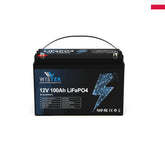
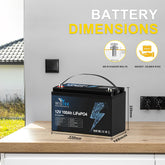

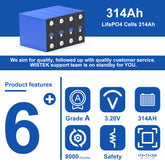


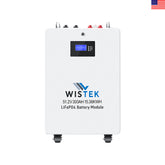
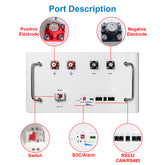
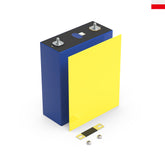

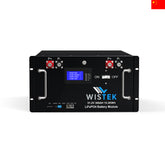
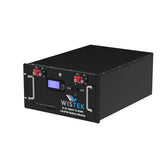


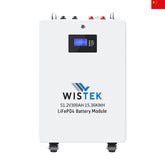
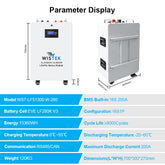


Leave a comment
All blog comments are checked prior to publishing